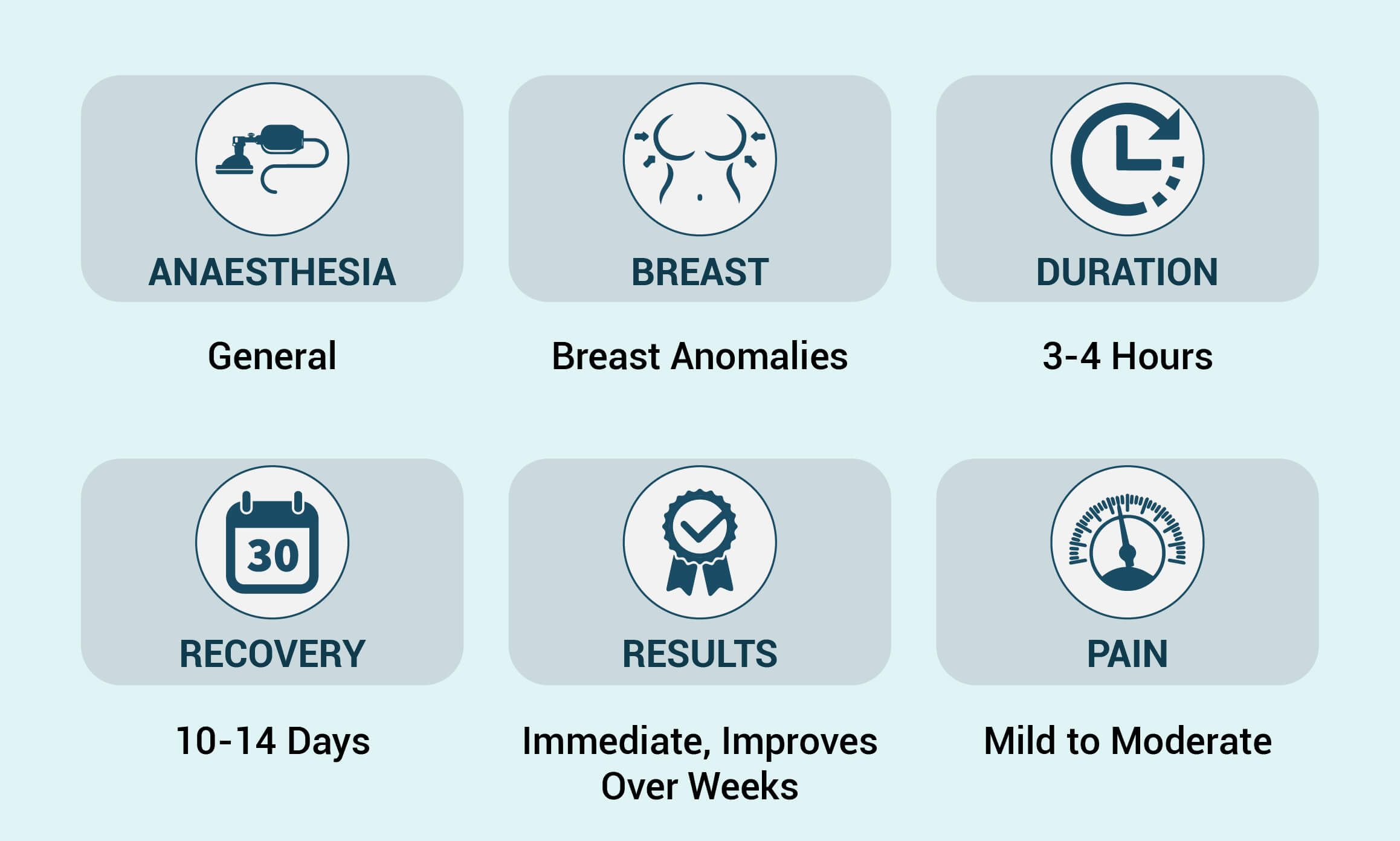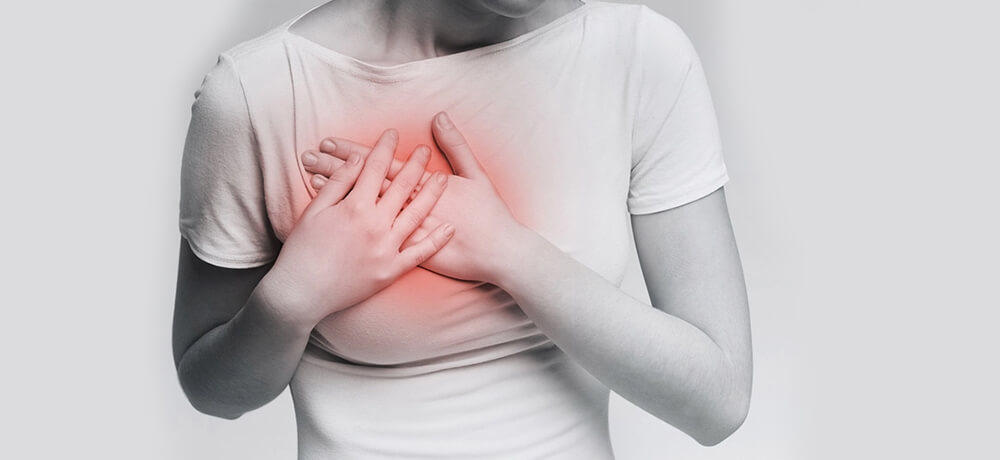Breast Surgeon for Breast Anomalies Treatment in Mumbai
These conditions may be due to bony abnormalities, e.g. pectus excavatum and pectus carinatum (pigeon chest), as well as muscular problems, e.g. Poland’s syndrome. There may be more minor forms of chest wall asymmetry caused by differences in breast volume and position e.g. Tuberous breast deformity , as well as asymmetry of the chest wall and ribs or thoracic skeleton.
Reconstruction is planned according to patients underlying condition. Surgical options vary from refashioning of the skeleton, muscle flap cover, or the use of prosthetic material to camouflage the defects.

What is Breast Asymmetry?

In female patients, it is possible to camouflage small to moderate asymmetries of the chest region with the use of breast implants placed over the pectoralis major muscle.
The new cohesive silicone anatomical (or teardrop) implants have enough versatility in their range of shapes and sizes to tailor each side to achieve near perfect symmetry. It is possible to use an identical height and width for the two sides, but use a different projection or profile to correct differences in chest wall and/or breast projection.
It is also possible for exact sterile sizers to be used at the time of the surgery to define the choices of implant size and dimensions.
What is Poland’s Syndrome
Poland’s syndrome is thought to be due to a kinking of the subclavian artery (the main artery to the arm and chest) at the sixth week in gestation. This causes abnormalities to the upper limb and chest. The features can range from mild to severe deformities.
The chest wall problems include abnormalities to the muscles of the chest wall (pectoralis major and minor, serratus anterior, latissimus dorsi and rectus abdominis), underdevelopment of the breast and nipple areolar complex and lack of axillary hair.
The upper limb problems can include a shortened arm and fingers and fused central fingers (symbrachydactyly).
What are techniques used to reconstruct the chest wall
Techniques to reconstruct the chest wall include:
Reconstruction of the underlying chest wall deformity.
Reconstruction of the breast mound with a tissue expander which can be inflated to keep up with the growth of the opposite breast and then replaced with a definitive implant.
Flap reconstruction using a pedicled latissimus dorsi flap or a free flap reconstruction (e.g. a TRAM flap).
What are Tuberous Breasts?
Tuberous BreastsTuberous Breasts are Breasts deformity can cause abnormalities of breast volume, volume distribution, breast shape and nipple areola size and shape. During puberty breast development is stymied and the breasts fail to develop normally and fully.
The lower pole of the breast is the most commonly affected. The effect of the condition on the appearance of the breast can range from mild to severe, and typical characteristics include enlarged, puffy areola, unusually wide spacing between the breasts, minimal breast tissue, sagging, higher than normal fold, and narrow base at the chest wall. The condition can cause low milk supply in breastfeeding women. However, other physical aspects of fertility and pregnancy are not affected by the condition. There are a number of degrees of severity depending on the constriction of the breast base, the level of the breast crease, the envelope, the breast volume and the nipple areolar complex.
Treatment for Tuberous Breasts
The appearance of tuberous breasts can potentially be changed through surgical procedures, including the tissue expansion method and breast implants . The procedure to change the appearance of tuberous breasts can be more complicated than a regular breast augmentation, and some plastic surgeons have specialist training in tuberous breast correction.
 WhatsApp
WhatsApp